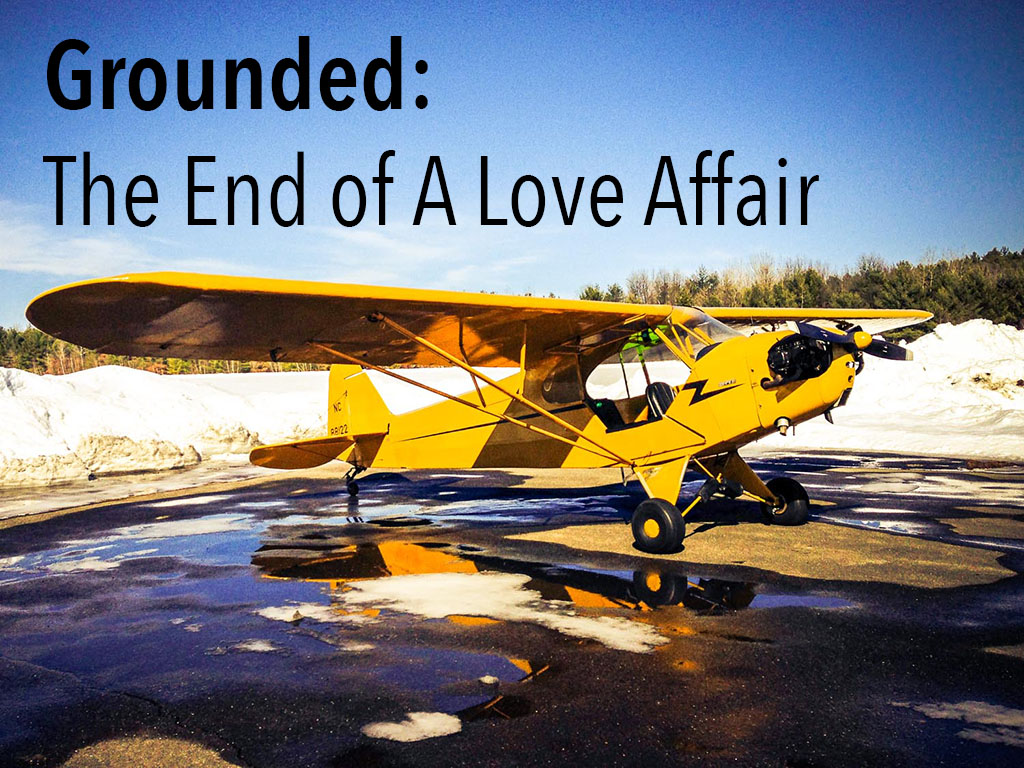Grounded: The End of a Love Affair


By Mark Zastrow
BU News Service
One hour west of Boston, past the Wachusett reservoir and farms draped on rolling hills lies a little strip of tarmac in a big grass field, surrounded by the central Massachusetts forest. A dozen small airplanes sit on the cracked asphalt next to rusted-out hangars with oil-stained floors. This is Sterling Airport, and as you walk to the door, a big green sign greets you, saying: LEARN TO FLY HERE.
The weather on this Saturday afternoon: clear skies, 50 ºF, over 10 miles visibility—more than enough to see Mt. Wachusett on the northwest horizon. It’s a spring day in February, and a beautiful one for flying. But the only thing up there now is a hawk, making lazy circles over the sun-beat tarmac, soaring on the rising air.
Inside the airport operator’s building it smells like old couches, and three greying white men are sitting on them. Hangar talk. Hanging on the wall are the T-shirts worn by student pilots on their first solo, signed with the date and the plane’s tail number. They end at 2007. One of them bears the slogan: “Sterling Airport: Grass roots aviation at its finest!”
Seems the grass has stopped growing. General aviation—that is, personal, non-airline flying—in the United States is in a nosedive. In 1980, according to FAA numbers, there were more than 200,000 student pilots in the process of earning their private pilot’s license. In 2009, there were 73,000. The number of active pilots has fallen from 827,000 to fewer than 600,000.
Rising fuel and insurance costs and the inexorable demographic of war-swollen generations of pilots are part of the reason. But there’s also been a cultural shift: flying simply isn’t cool. When I was a kid, Popular Mechanics still published cover stories about flying cars. But this afternoon at Sterling, the personal airplane seems a thing of the past, not the future.

After me, the next youngest person in the room is Renee, a woman in her mid-40s with brown hair and a lilting Midwestern accent. She’s been a tow pilot with Sterling’s gliding club for 12 years. I ask how many kids are training here these days. “It’s…a reasonable number,” she says. “A lot less than a few years ago.” She glances at the rates written on the wall: $88/hr to rent the Cessna 150 two-seater, plus $45 for the instructor. It’s double what I paid to get my license a decade ago growing up in Wisconsin. “Not many can afford it anymore.”
As a child, I heard small airplanes pass over my yard every day. I always looked up. It wasn’t the freedom that I craved, to feel the “tumbling mirth of sun-split clouds in footless halls of air” that John Gillespie Magee, Jr. immortalized in his sonnet “High Flight.” No, more than anything else, I wanted to fly because I wanted to look down. I wanted perspective. I wanted to know what my house looked like from above—to find out where I was, to place myself amongst my surroundings. The year after I got my pilot’s license, I came across a site called Google Maps. And eventually, I stopped looking up.

I remember to look up now as I walk back to my car. The skies are still clear; even the hawk is gone. From the south end of the strip, Mt. Wachusett rises from the treeline, seven miles distant as the hawk flies. On a good summer day, when the ground is warm, you can hop in a glider, get a 3,000 foot tow, and soar all the way there to dance across its slopes on the uplift off the ridges and glide back to Sterling—or so I’m told. Since I arrived, I haven’t see a single plane take off or land, nor heard a single engine fired.
But I’ll be back. I forgot to pay for my coffee.